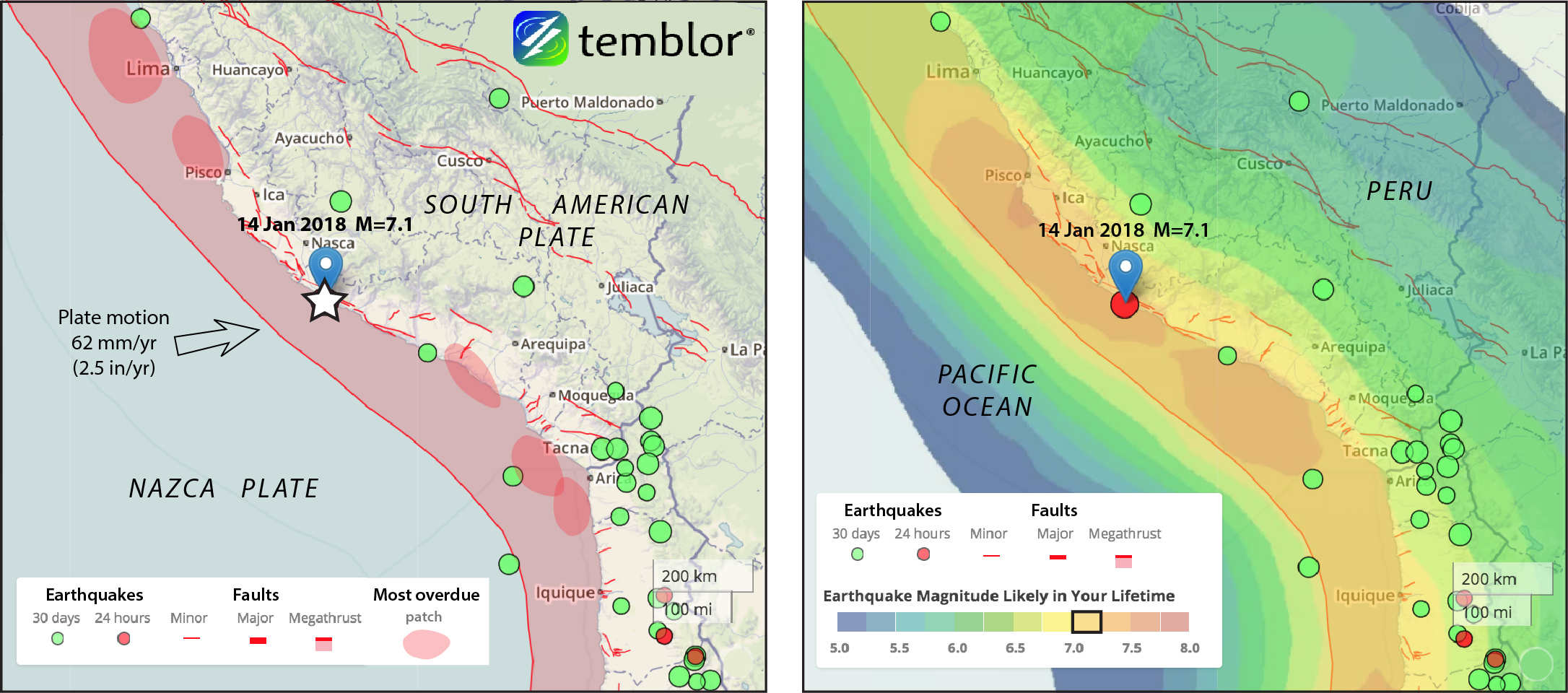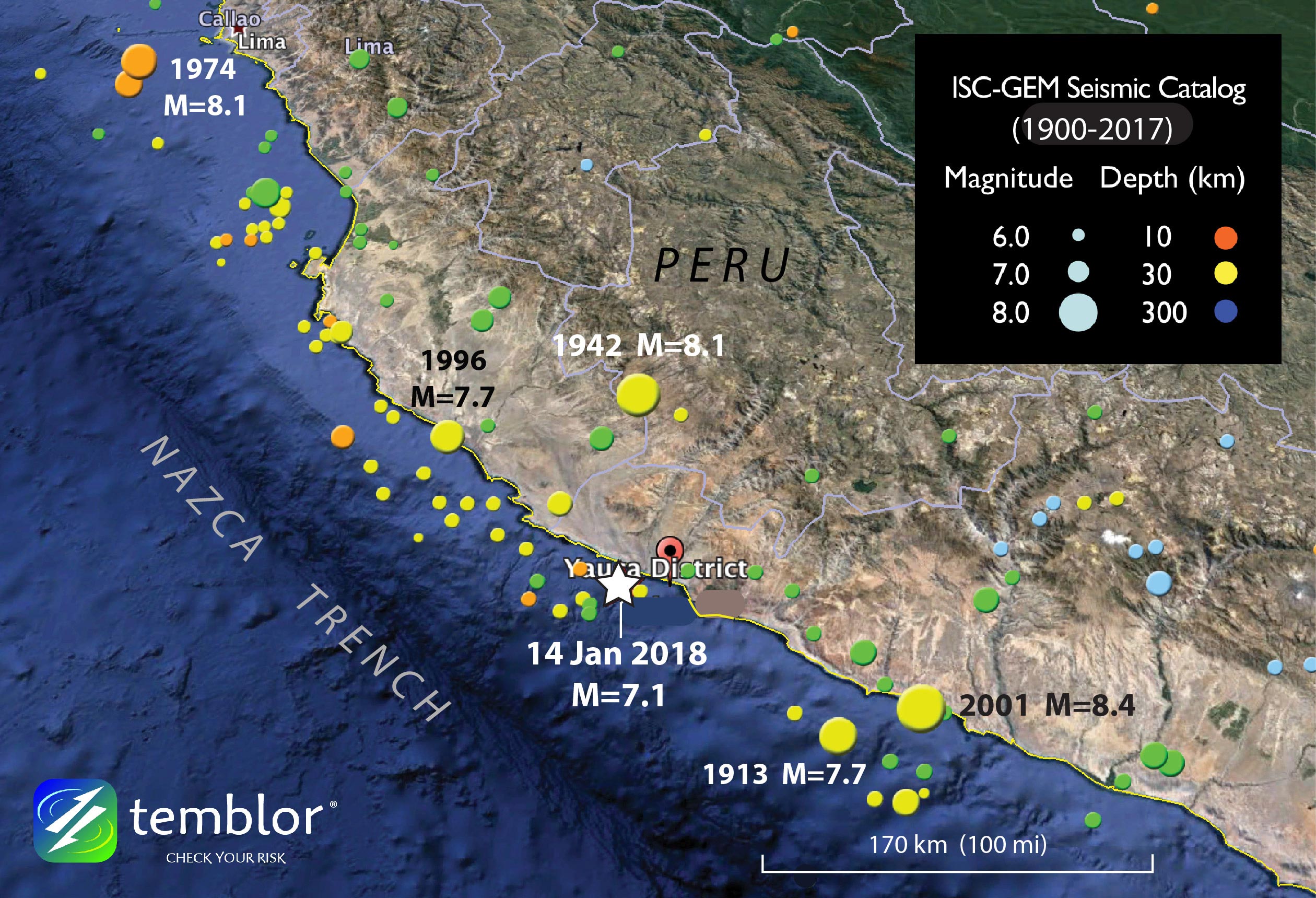Ross S. Stein, Ph.D., Temblor

This morning’s earthquake struck at a depth of 36 km. Given its modest size and moderate depth, it did not produce a large tsunami. Nevertheless, one death and 42 injuries have been reported, and Peru will declare a state of emergency in parts of Arequipa, the state lying to the southeast of the epicenter.
The quake occurred in a highly active region of the Peruvian coastline (below right), in which a M=7.1 is not uncommon. In fact, according to the GEAR earthquake forecast, a local resident would be expected to experience a quake of this about size in their lifetime. Within a 300 km (180 mi)-long stretch of coastline from of today’s epicenter, there have been a dozen M≥7 quakes since 1913.

Neither the USGS nor the EMSC catalogs show any foreshocks during the past 30 days, nor aftershocks during the past 18 hours. These catalogs have a detection level of about M≥4.2 here, so this is a surprising episode of seismic quiet, as well as a remarkable absence of aftershocks. The Geophysical Institute of Peru (IGP) reported just two aftershocks, a M=3.7 and M=3.8 events in the first 6 hours. These are beneath USGS and EMSC detection levels.

Sources
USGS
EMSC
IGP
Xinhua News Agency
Mohamed Chlieh, Hugo Perfettini, Hernando Tavera, Jean-Philippe Avouac, Dominique Remy, Jean-Mathieu Nocquet, Frédérique Rolandone, Francis Bondoux, Germinal Gabalda, Sylvain Bonvalot (2011), Interseismic coupling and seismic potential along the Central Andes subduction zone, Journal of Geophysical Research, 116, doi: 10.1029/2010JB008166
- Earthquake science illuminates landslide behavior - June 13, 2025
- Destruction and Transformation: Lessons learned from the 2015 Gorkha, Nepal, earthquake - April 25, 2025
- Knock, knock, knocking on your door – the Julian earthquake in southern California issues reminder to be prepared - April 24, 2025
